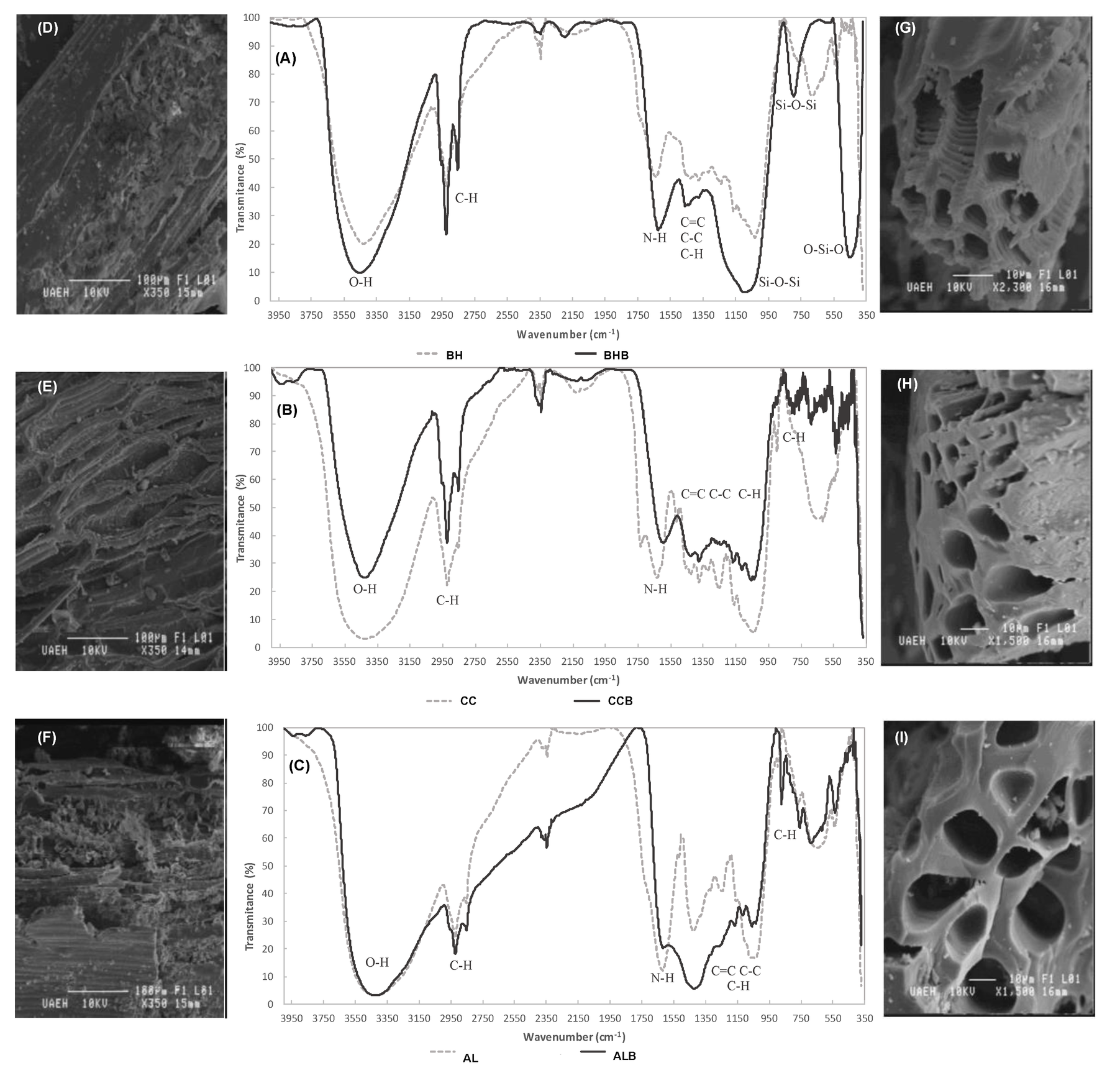This research demonstrates the optimization and production of biochar from barley husk (BH), corn cob (CC), and Agave salmiana leaves (AL) via pyrolysis in a muffle furnace. Taguchi experimental design (L9) was applied to conduct the experiments at different levels by altering four operating parameters. Carbonization temperature (300–500 ºC), carbonization time (30–90 min), precursor mass (2–5 g) and N2 flow rate (100–200 cc/min) were the variables examined in this study. The effect of the parameters on the biochar yield was investigated, and the important parameters were identified employing analysis of variance (ANOVA). The optimum conditions for maximum biochar yield were: carbonization temperature of 400 ºC, carbonization time of 30 min, precursor mass of 2 g, and N2 flow rate of 150 cc/min. The biochars produced under optimum conditions was characterized physically and chemically. Biochar yields of 19.75% for corn cob (CCB), 32.88% for barley husk (BHB), and 31.14% for agave leaves (ALB) were obtained.

